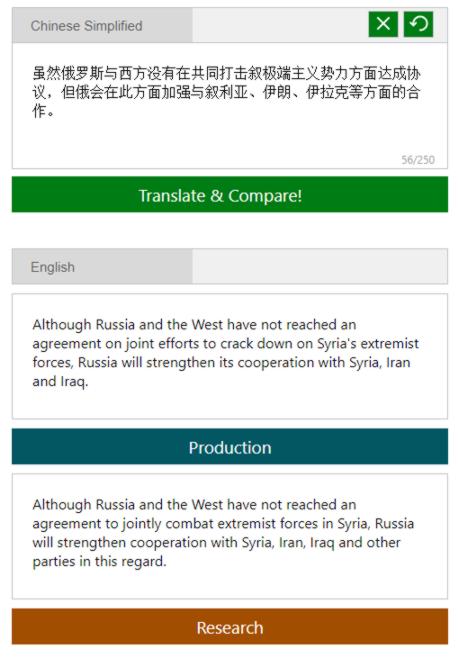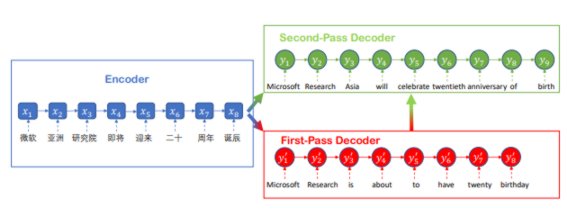| Microsoft Research Achieves Human Parity For Chinese English Translation |
| Written by Sue Gee | |||
| Wednesday, 21 March 2018 | |||
|
Researchers in Microsoft's labs in Beijing and in Redmond and Washington have developed an AI machine translation system that can translate with the same accuracy as a human from Chinese to English. Xuedong Huang, who heads the Speech & Dialogue Research Group, part of Microsoft Artificial and Intelligence and Research, has called the achievement a major milestone in one of the most challenging natural language processing tasks, saying “Hitting human parity in a machine translation task is a dream that all of us have had. We just didn’t realize we’d be able to hit it so soon.” It was Huang's group that last year achieved human parity in a conversational speech recognition task, (see Transcription On Par With Human Accuracy) and he sees the translation milestone as especially gratifying because of the possibilities it has for helping people understand each other better. Academic and industry researchers have worked on machine translation for years and the recent breakthroughs have been achieved using deep neural networks which have enabled more fluent, natural-sounding translations that take into account an even broader context than the previous approach, known as statistical machine translation. You can see how neural networks have improved machine translation with Microsoft Translator Try & Compare which has been set up to demonstrate Chinese to English translation showing the results from the current Production system in comparison with its Research counterpart.
This demo is not of the human-parity system, which, as reported in the paper Achieving Human Parity on Automatic Chinese to English News Translation, is a combination of multiple systems. The lower window here labelled Research is the best single system within the new system. The dataset used in the demo is the same as in the research effort, newstest2017, comprising sentences from news stories that was released by the 2017 Conference on Machine Translation. The paper's authors includes Tie-Yan Liu, a principal research manager with Microsoft Research Asia in Beijing, who leads a machine learning team that worked on this project. On the Microsoft Research blog he outlined the way in which the researchers combined a number of training methods to make the system more fluent and accurate, inspired by the way humans do things. One existing method developed by the Microsoft research team, which can also be used to improve results in other AI tasks is dual learning, which can be regarded as a way of fact-checking the system’s work: Every time a sentence went through the system to be translated from Chinese to English, the research team also translated it back from English to Chinese. That’s similar to what people might do to make sure that their automated translations were accurate, and it allowed the system to refine and learn from its own mistakes. Another method, called deliberation networks, is similar to how people edit and revise their own writing by going through it again and again. The researchers taught the system to repeat the process of translating the same sentence over and over, gradually refining and improving the response.
The researchers also developed two new techniques to improve the accuracy of their translations. One of these, joint training, was used to iteratively boost the English-to-Chinese and Chinese-to-English translation systems. With this method, the English-to-Chinese translation system translates new English sentences into Chinese in order to obtain new sentence pairs. Those are then used to augment the training dataset that is going in the opposite direction, from Chinese to English. The same procedure is then applied in the other direction. As they converge, the performance of both systems improves. The other is agreement regularization. With this method, the translation can be generated by having the system read from left to right or from right to left. If these two translation techniques generate the same translation, the result is considered more trustworthy than if they don’t get the same results. The method is used to encourage the systems to generate a consensus translation. Zhou expects these methods and techniques to be useful for improving machine translation in other languages and situations and to be used to make other AI breakthroughs beyond translation, saying: “This is an area where machine translation research can apply to the whole field of AI research." To further ensure accuracy of the evaluation, the team also hired bilingual human evaluators who compared the results against a different set of human-produced translations. The paper's abstract concludes: We find that our latest neural machine translation system has reached a new state-of-the-art, and that the translation quality is at human parity when compared to professional human translations. We also find that it significantly exceeds the quality of crowd-sourced non-professional translations.
More InformationAchieving Human Parity on Automatic Chinese to English News Translation (pdf) Microsoft Translator Try & Compare Related ArticlesTranscription On Par With Human Accuracy Neural Networks Applied To Machine Translation Speech Recognition Breakthrough Skype Translator Cracks Language Barrier To be informed about new articles on I Programmer, sign up for our weekly newsletter, subscribe to the RSS feed and follow us on Twitter, Facebook or Linkedin.
Comments
or email your comment to: comments@i-programmer.info |
|||
| Last Updated ( Wednesday, 21 March 2018 ) |





